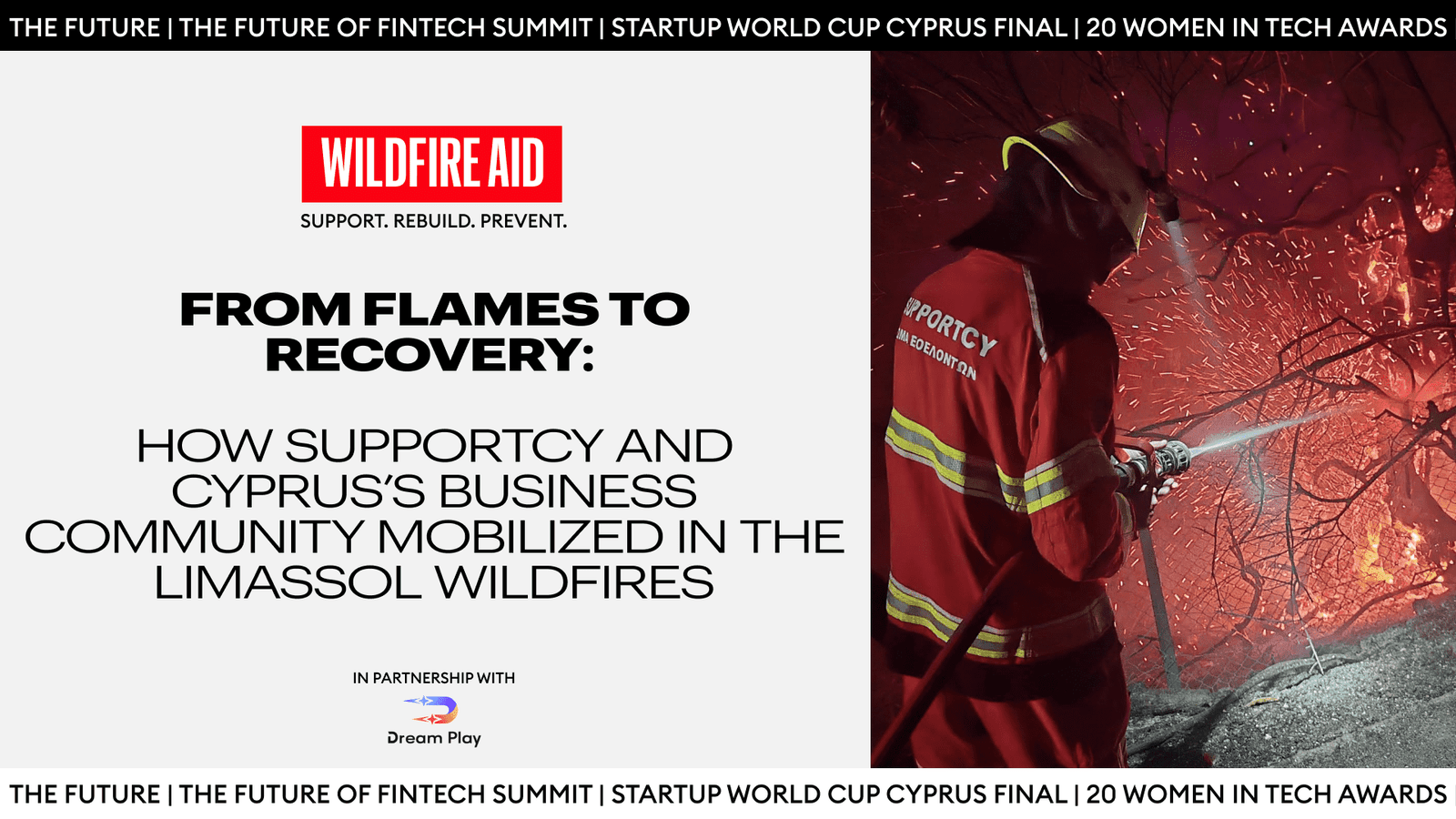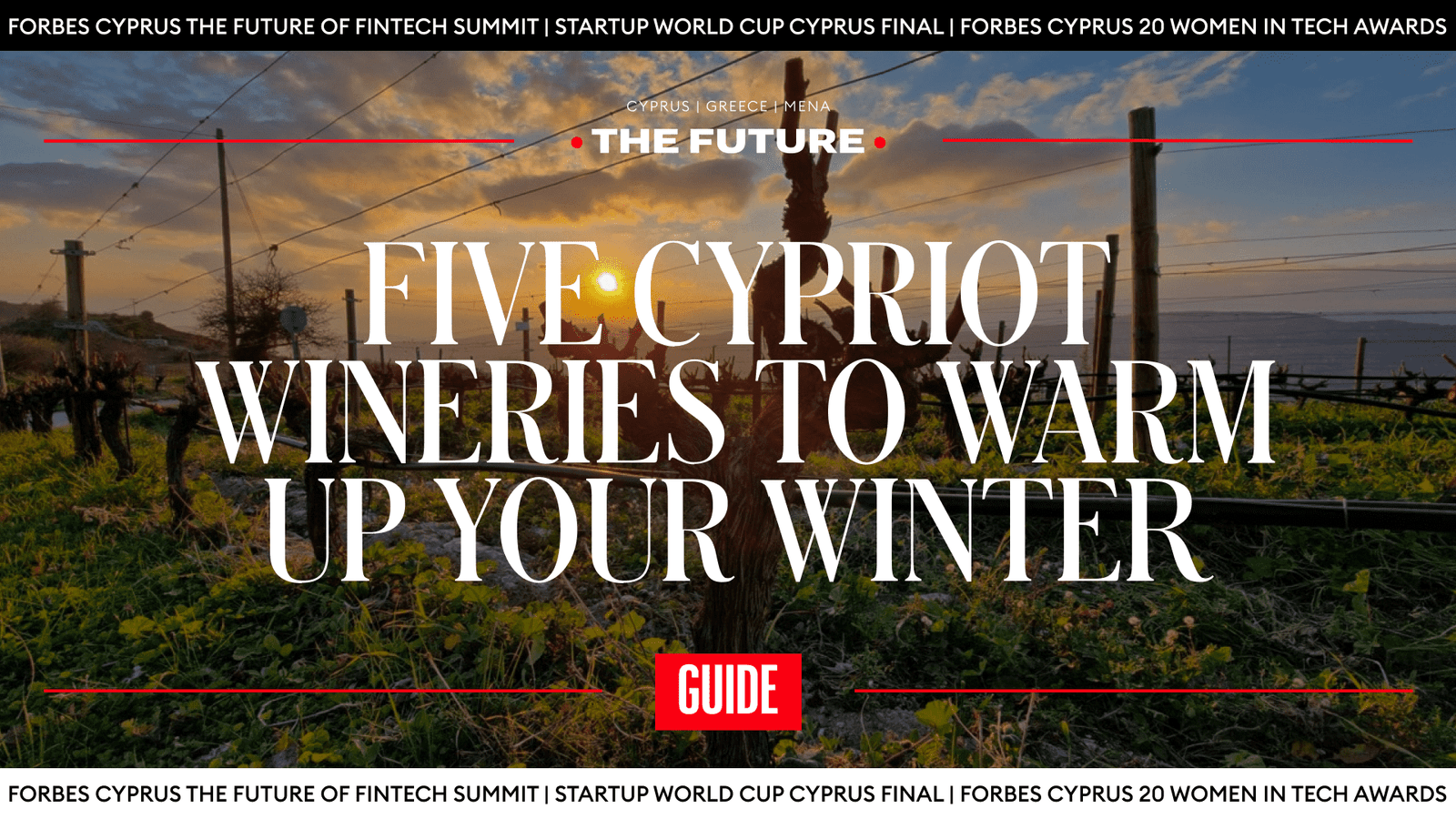My name is Marios Stavrou. As Head of Operations at SupportCY of the Bank of Cyprus, since 2020 (and even before that), I have been actively engaged in the prevention, response, and recovery efforts from major crises and disasters both in Cyprus and abroad. When we established the SupportCY Volunteer Corps, which I lead, we set out to support the Cyprus Fire Service in preventing and suppressing dozens of wildfires, floods, and other extreme weather events. Over the years, our Volunteer Corps has assisted in numerous search and rescue operations for missing persons in close cooperation with the Cyprus Police.
During the island’s “fire season,” we work closely with the Cyprus Fire Service to conduct early detection and prevention patrols (aerial – drones, motorized, and foot patrols). On high-risk days, we pre-position fire trucks, equipment, and volunteers to allow for rapid mobilization, especially in vulnerable areas.
Follow THE FUTURE on LinkedIn, Facebook, Instagram, X and Telegram
This year, we went a step further and established the Helicopter Firefighting Support Unit. Together with the National Guard’s Aerial Firefighting Unit, the Cyprus Police Aviation Unit, and the Fire Service, we successfully carried out Cyprus’s first trial refuelling of the firefighting helicopters from an inflatable water tank. When necessary, our Volunteer Corps can now deploy this capacity directly to wildfire incidents.
High risk
At midday on that day in July, our team had already been deployed at the request of the Cyprus Fire Service to a large wildfire in the Nicosia district. The incident was so severe that I personally joined the team.
While we were still fighting the flames in Nicosia, the SupportCY Volunteer Corps Coordination Center informed me of another major wildfire breaking out in the mountainous region of Limassol. At the same time, the Fire Service in Limassol was calling on our local Limassol district unit to respond.
The fire was spreading rapidly in Limassol. After speaking with our Limassol regional coordinator, I knew we had no time to lose. We activated our internal contingency plan “Astrapi”, which calls for the immediate and full-scale mobilization of vehicles, volunteers, and equipment on a nationwide basis. Within minutes, units from across Cyprus were dispatched to Limassol.
Shortly before 4:00 p.m., I was released from the Nicosia fire and drove straight to Limassol. By the time I reached the area, I already knew, based on the reports from my colleagues from SupportCY, that we were facing a large-scale wildfire in an extremely high-risk region. The safety of the team was my priority: we had to implement all necessary caution, coordination, and operational measures if we were to support the Fire Service in confronting and effectively putting an end to this disaster.
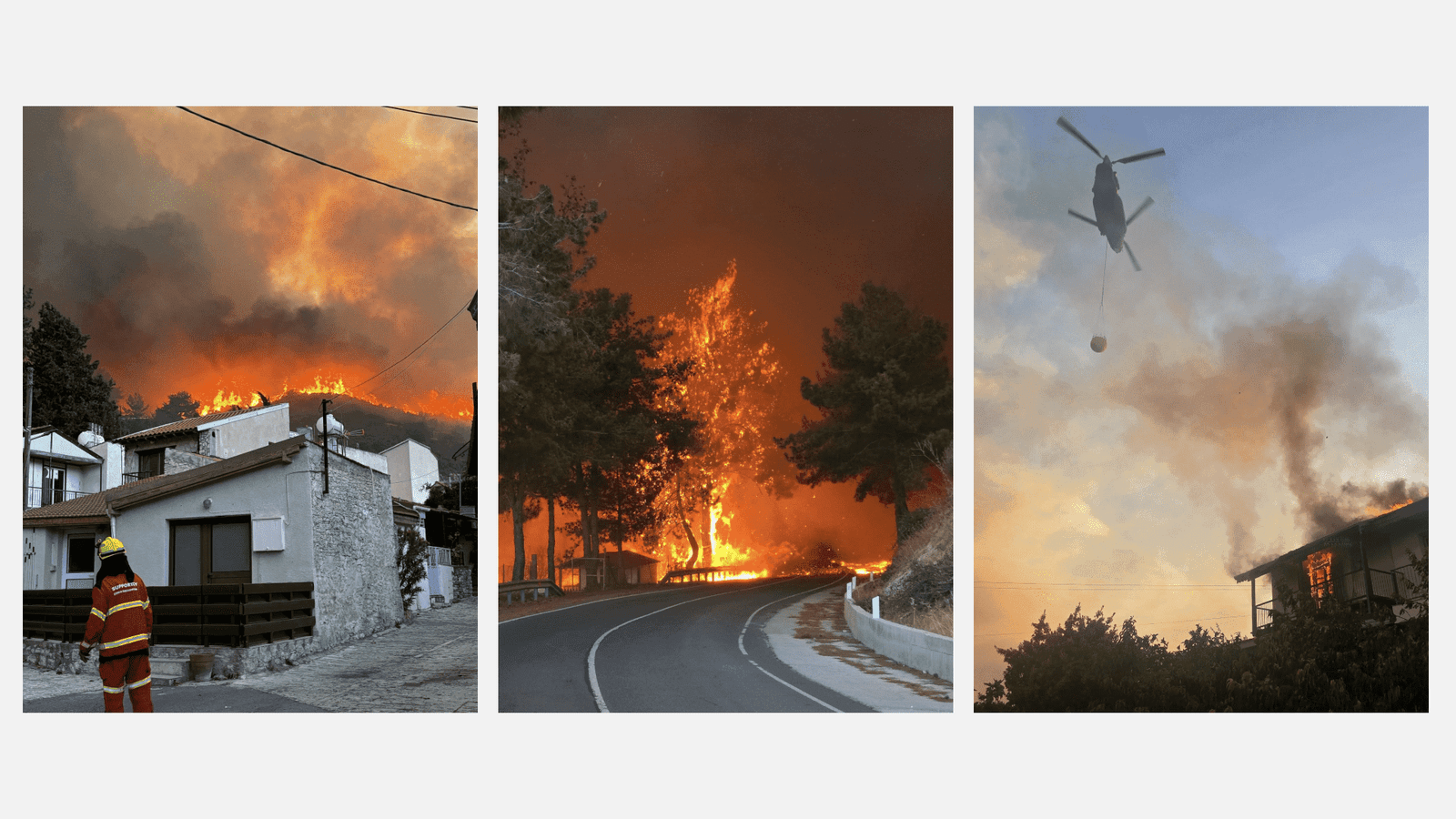
Constant shifts
We have a clearly defined role as specialized volunteers: we operate strictly within the framework of the procedures and protocols provided by the Cyprus Fire Service, always following the instructions of the incident officer.
Upon my arrival at this particular fire, I requested a full briefing from our Limassol district coordinator—who, together with his teams, was already on the ground—on both the overall fire situation and the condition of our volunteers actively engaged in operations.
The dynamics of the fire were constantly shifting. As more of our Volunteer Corps forces arrived on scene, we were often required to re-adjust our operational plans. Our teams engaged in suppression efforts across five different communities in the first two days, utilizing our firefighting vehicles and equipment. In the days that followed, we tackled both small and large flare-ups across the wider burn area.
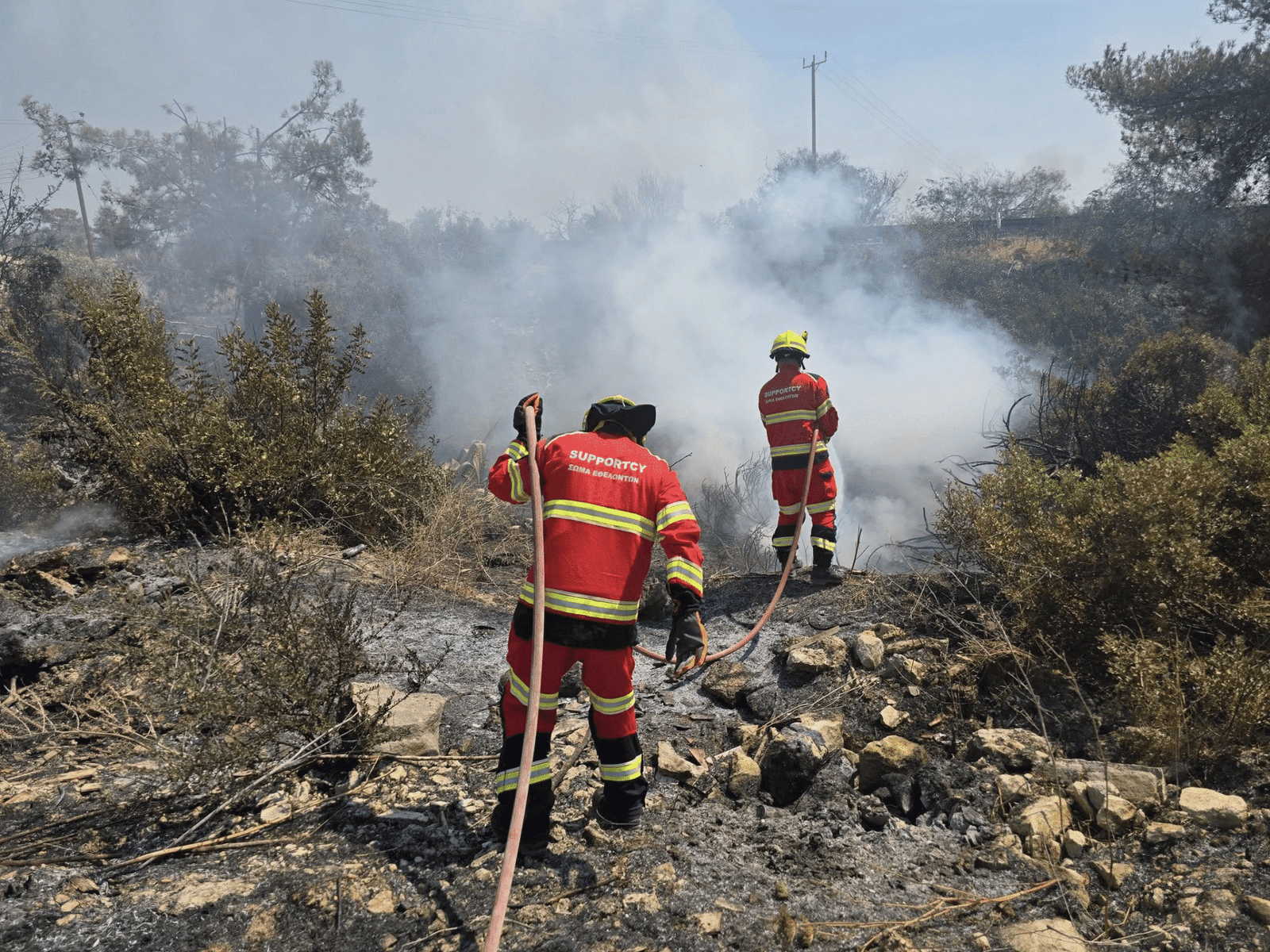
When the wildfire was finally contained, our mission entered a new phase: supporting the recovery effort of the affected areas and communities. We deployed vehicles, equipment, and volunteers to assist in the restoration of homes and public spaces, working side by side with local authorities and partner organizations.
Challenges we faced
When you are on the frontline of a wildfire, especially one as large as this particular one, understanding your role as a specialized volunteer is critical for the safety of the team and yourself. You must know exactly what you can do—and equally what you must not do. When you are responsible for a large team, vehicles, and equipment in a potentially hazardous environment, it is essential to follow established protocols and procedures with absolute precision.
The fire severely damaged road networks, electricity supply, and communications infrastructure in the area. In many cases, this made communication among team members difficult, and at times, impossible. For this reason, we activated our internal communications and coordination protocol under the “Hyperion Plan,” a coordination system we built with Frotcom Cyprus last year. It is a digital platform accessible through an app that lets us track every vehicle and volunteer in real-time. So even when our network communications failed, I could see on my screen where each team was and send instructions directly. This kept us connected and coordinated as a team.
As team leader, I was responsible not only for operational readiness but also for the safety, medical coverage, nourishment, and emerging needs of our volunteers throughout the operation.
Thankfully, the systems we had put in place worked as designed, allowing us to overcome every challenge successfully. Over eight days—whether in active firefighting or in post-fire recovery—our teams consistently maintained the highest levels of safety, efficiency, and effectiveness.
What stayed with me
Wildfires leave behind nothing but soot, ruins, and devastation. In just a few minutes, they can take lives, destroy homes and infrastructure, annihilate the environment, and ecosystems. And yet, some of the most profound consequences remain invisible: the destabilization of household economies, the psychological trauma, the fear carried by children and vulnerable groups, and so much more.
Despite having faced many large-scale disasters before, I cannot even begin to put into words how powerless I felt when a child—whose family had just lost their home—looked at me while I stood there in uniform. For the first time, I did not know what to say in front of such an innocent gaze. That child, like many others, watched their home burn and was forced to flee in fear for their life.
The private sector’s response
In nearly 15 years of crisis and disaster management, I am reminded of one unshakable truth: the unparalleled solidarity of our people and business community in Cyprus. This wildfire was no exception. We witnessed an extraordinary mobilization from the very first moment — a collective determination to stand by the fire-affected communities at every level.
At SupportCY of the Bank of Cyprus, we immediately activated all our support mechanisms, as we have done in previous crises. What followed was a remarkable joint effort that brought together organizations and companies in a united front. From providing over 300 meals daily to frontline professionals and volunteers, in close cooperation with the Cyprus Fire Service, to the urgent supply of specialized equipment, protective gear, electrolytes, and other essentials, the response was swift, coordinated, and impactful. Member companies of SupportCY mobilized from day one, and targeted actions continue to this day in close collaboration with state authorities.
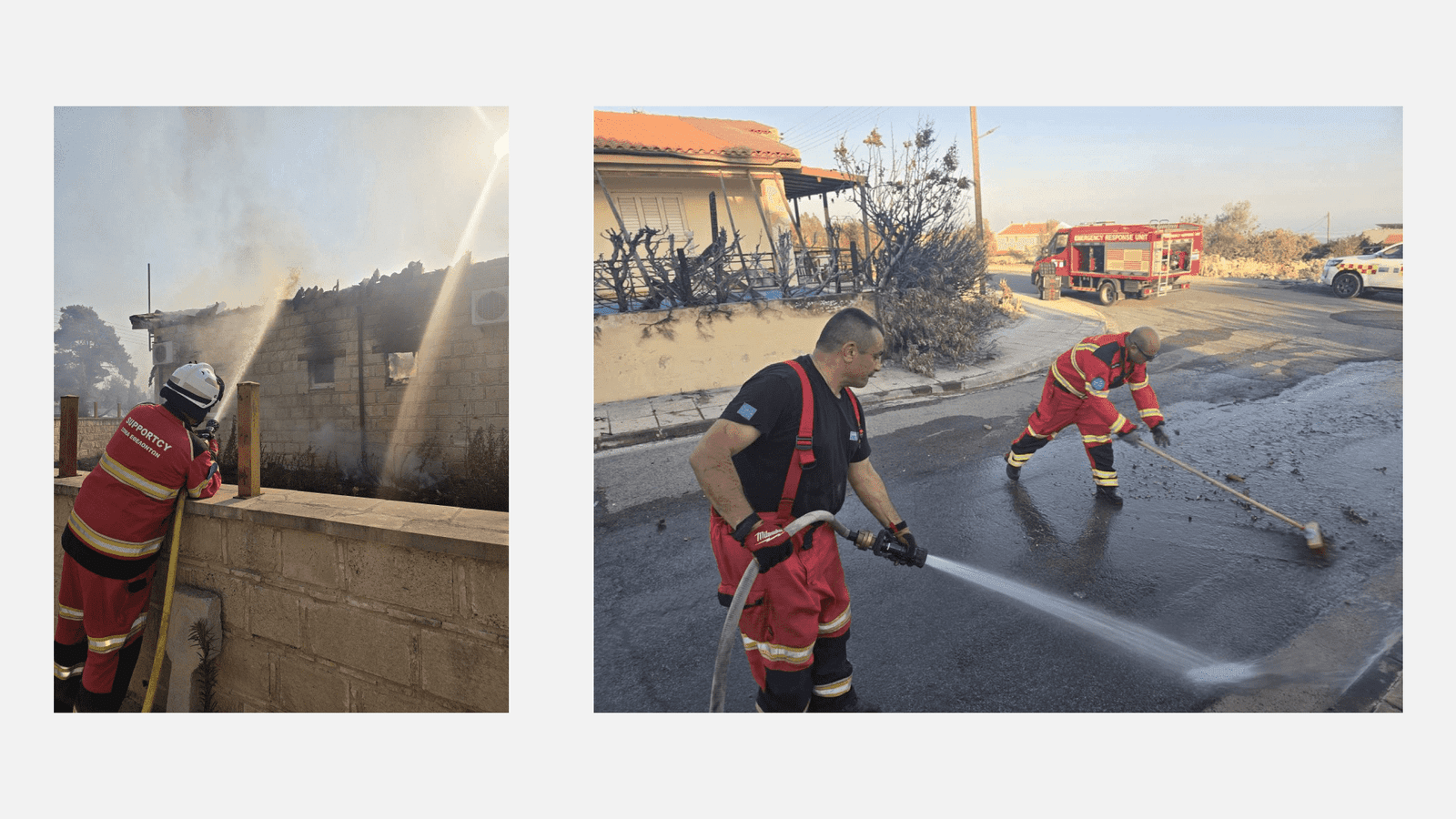
One moment that remains vivid in my memory is the dawn of the second day of the fire. After a brief rest before returning to the frontline, I opened my inbox to find it overflowing with messages from partners and businesses eager to help. One stood out: Exness. Within hours, they had committed to housing families who lost their homes. Since then, we have been in almost daily contact, working hand in hand to address both urgent and longer-term needs of affected families and communities. They have provided everything from food and essential supplies to accommodation for eight households in their own facilities, and even deployed volunteers to participate in clean-up and recovery efforts in the affected villages. Together, we are already shaping new actions and initiatives that will deliver meaningful social impact for the future.
Equally inspiring was the immediate response of other long-standing partners — Petrolina, Houtris, ΚΕΔΙΦΑΠ Spanias Hardware, among others — who stepped forward without hesitation. Whether through fuel donations, specialized equipment, technical expertise, or continuous logistical support, they stood firmly by the SupportCY Volunteer Corps throughout our eight-day deployment in the fire zones. Their contributions made it possible for us to sustain operations and maximize our effectiveness on the ground.
What this crisis reaffirmed is that when businesses, volunteers, and public services join forces, the result is far greater than the sum of its parts. It is not only about disaster response. It is about building resilience, protecting lives, and creating lasting social impact for our communities.
Lessons to act on
Every disaster teaches us hard lessons to prevent similar tragedies in the future. I believe this wildfire is our wake-up call to re-evaluate different levels of the state mechanism.
We do not need to reinvent the wheel in Cyprus, but at the same time, we cannot simply copy systems from other countries without the necessary adjustments to meet our own national needs. There are many areas where improvements could be made, but allow me to focus specifically on the role of volunteering.
Once again, during this disaster, volunteers in Cyprus made their presence felt: dynamic, effective, and in many cases significantly enhancing the efforts of state authorities, both operationally and on a humanitarian level. It is an undeniable fact that, in recent years, Cyprus has made serious progress in the proper integration of specialized volunteering. However, this is an area that can and must be further developed from the local to the national level.
Training, strengthening, and coordinating volunteers is critical if we want them to be effectively utilized by the competent state services.
A message for the future
There is one message that I would like to share: for all those who can support these people and their communities, be there even after the “lights go out” on this disaster. Recovery is a difficult and long-term process, one that these families must not go through alone. Each of us, in our own way, must stand by them.




